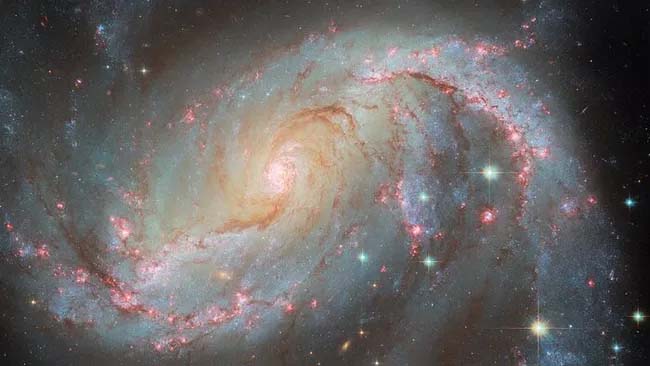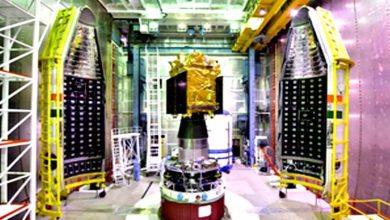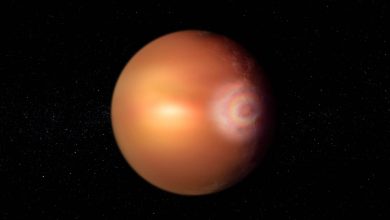Supernova hidden in Hubble Telescope’s new galaxy ‘light show’ image

SCIENCE: A celestial light show illuminates a distant spiral galaxy, where a hidden supernova briefly outshines its stellar neighbors in a new image taken with the Hubble Space Telescope. The galaxy, called NGC 1672, is a barred spiral galaxy located 49 million light-years from Earth in the constellation Dorado. Billions of stars powered by hydrogen gas in the spinning arms shine in the galaxy, with newly formed and extremely hot stars emitting powerful radiation that creates a vibrant red glow, according to a statement from the European Space Agency (ESA). (Hubble is a joint mission of NASA and ESA.)
The center of the galaxy appears exceptionally bright as a result of a supermassive black hole that lies inside and eats up surrounding matter, known as an active galactic nucleus. Many of the hot young stars (bright pink spots of light in the image) occupy the ring of gas that feeds the galaxy’s central black hole.
As the host of an active galactic nucleus, NGC 1672 is formally classified as a Seyfert galaxy. This type of galaxy is considered incredibly luminous, with a nucleus that can shine as bright as 100 billion suns.
“This galaxy is a multi-talented light show, showcasing an impressive array of different celestial lights,” ESA officials said in the statement. “Like any spiral galaxy, its disk is filled with billions of bright stars that give it a beautiful glow.”
Data collected by Hubble also revealed a surviving Type I supernova called SN 2017GAX, which can be seen beneath one of the galaxy’s two major spiral arms near the bottom right of the image. This supernova is the most fleeting and temporary of the galaxy’s light sources, according to the statement.





